The new Merit helmet from Giro is designed for trail riding and comes packed full of safety features.
Despite the high cost, it’s still cheaper than the range-topping Manifest Spherical, but employs much of the same safety tech. However, in the Merit’s case, that tech is incorporated slightly differently.
Giro Merit Spherical helmet construction
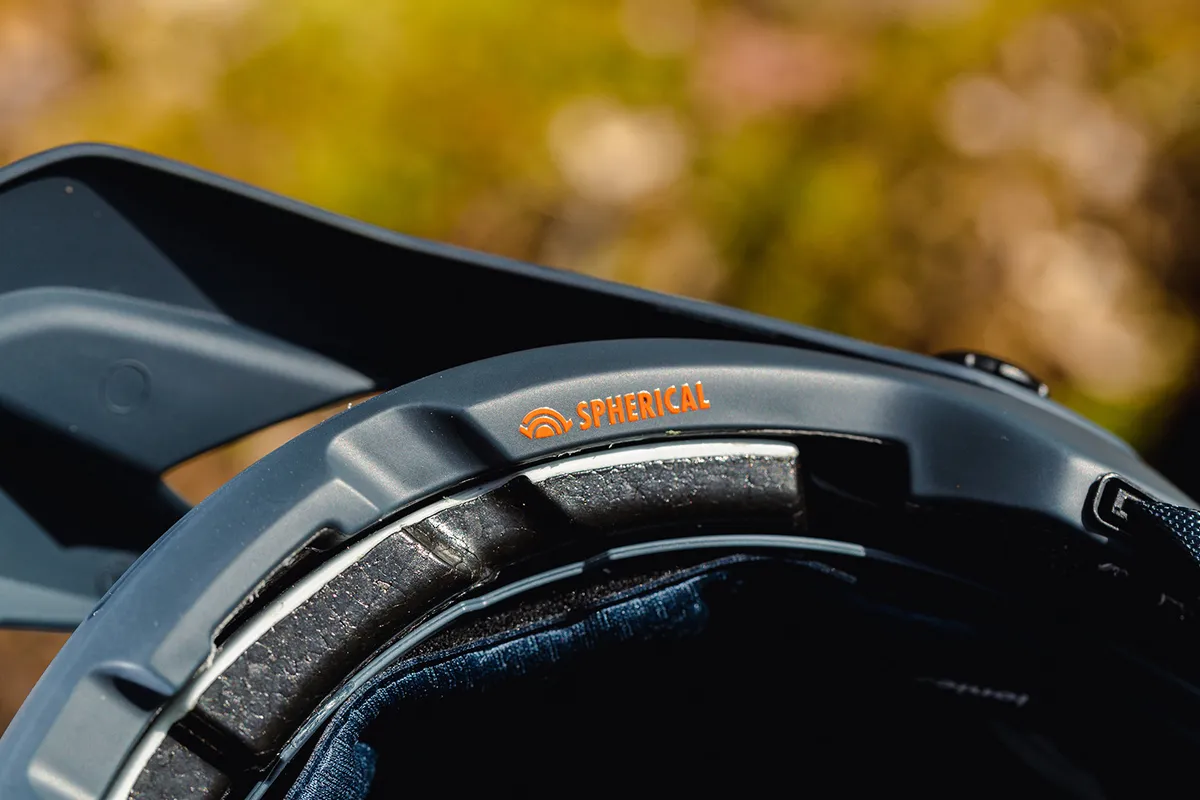
At the core of the Merit Spherical, and one of the main factors behind the lofty price tag, is the Spherical Technology, which was developed in conjunction with MIPS (Multi-directional Impact Protection System).
This Spherical Technology (in the case of the Merit) consists of two parts. A smaller inner shell (that sits directly on your head) is fixed to a larger outer shell via a series of elastomers. On impact, the outer shell is able to rotate (very slightly) around the inner shell.
It’s this rotation during a crash that’s designed to redirect the impact force away from your brain if you clatter into the dirt at an angle (and let’s be honest, you tend to fall at awkward angles most of the time).
When compared to the Manifest Spherical, the Merit is slightly different. It uses a smaller inner shell, which is fully wrapped in the outer shell, while the Manifest employs a full inner shell with a separate section of the outer shell that's then able to rotate over the inner shell.
Giro has constructed the two shells from different EPS foam densities, something it refers to as 'Progressive Layering'. Essentially, this means while one foam can better absorb low-speed crashes, the other is designed to handle high-speed impacts.
The inner shell is also coated in a white, low-friction layer to aid how easily one shell moves within the other.
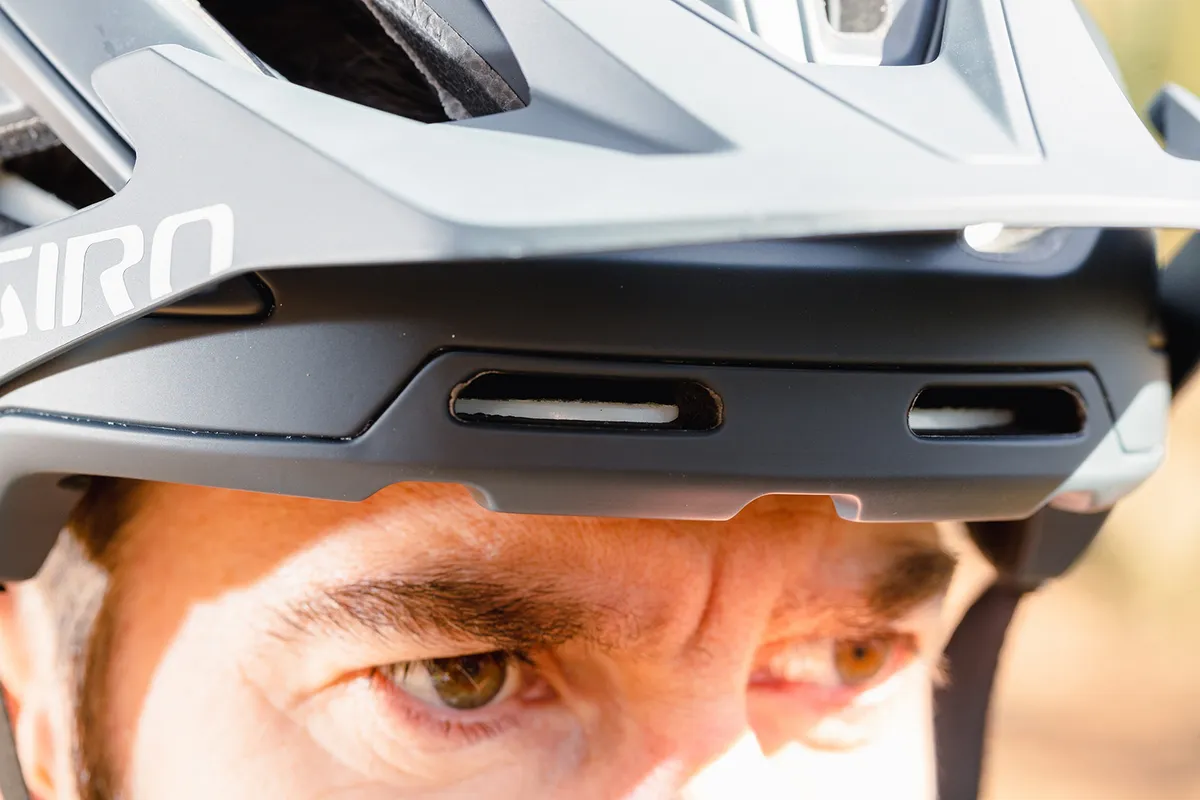
Using an in-moulded construction means there’s no exposed EPS foam on show, with the polycarbonate shell wrapping fully around the outer of the helmet, down and over the rim of the lid. This helps to prevent any accidental damage to the foam liner (I’m talking about those little knocks and scrapes your helmet will likely suffer inside your kit bag or when rattling around in your car on the way to the trails).
There’s no AURA reinforcing arch used on the Merit, though, unlike the Manifest. This structural polycarbonate band spanning the width of the helmet helped Giro incorporate more vents into the Manifest. To save cash, the Merit forgoes the arch, and its vents aren’t quite as large, but there’s still plenty of them.
In fact, there are 15 in all (including two sizeable brow ports), plus six exhaust ducts and plenty of internal channeling in a bid to encourage the air to move over your head while you pedal.
In terms of coverage, while the Merit doesn’t sit as low as a more enduro-focused helmet such as Troy Lee Designs' A3 and engulf your head in quite the same way once on, there’s still a reassuring amount of drop at the rear and in front, just over the temples, too.
Giro Merit Spherical helmet spec details
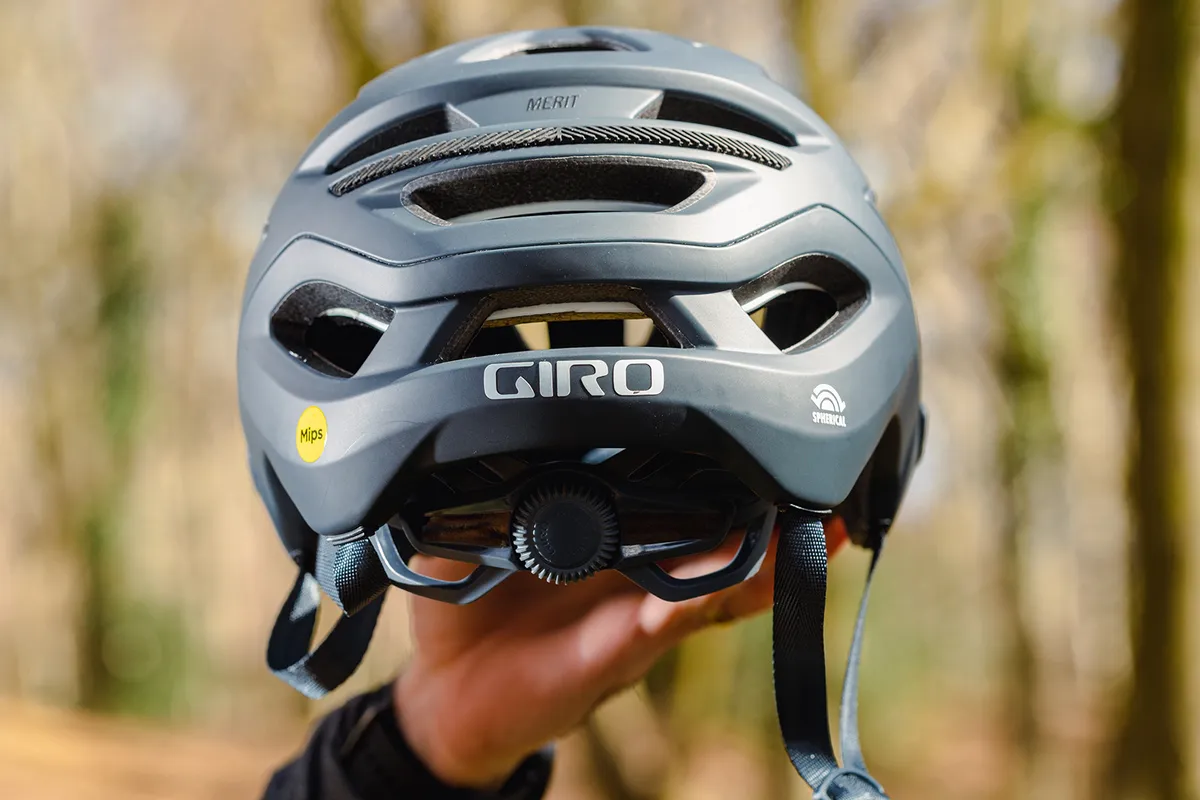
To keep the Merit fastened securely to your head, it features the brand's highly acclaimed Roc Loc Trail Air retention cradle.
The large indexed dial at the rear gives a wide range of easy-to-use adjustment. Because the cradle wraps around the entire circumference of your head (rather than using two separate anchor points to pull against), tension around the head should be distributed more evenly.
A nice touch that Giro includes on the inner side of the cradle, at the rear of the helmet, is the foam padding.
To get fit just right, the Roc Loc system has three different vertical positions to choose from.
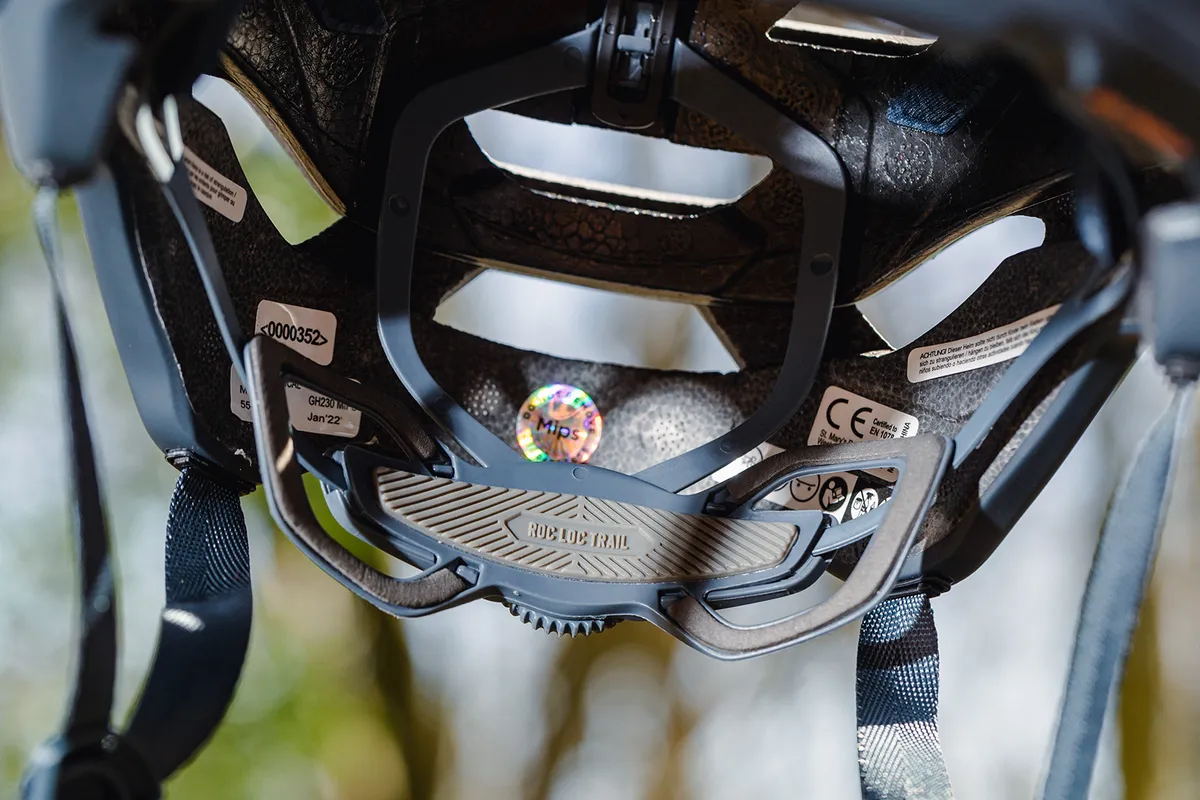
The straps, which fasten with a standard buckle and not a magnetic Fidlock clip as seen on the pricier Manifest lid, fix to the outer shell of the helmet and feature a sliding divider to help get them fitting correctly around your ears.
Other details include the movable peak, which can be shunted up and out of eye line easily enough, a textured rubber strip at the rear to help keep goggle straps in place and a couple of rubber grippers inside the front/side vents to grip the arms of glasses in case you need to stash them on the climbs.
The Iconic+ antimicrobial padding comes in six separate sections and can easily be removed and washed.
Giro Merit Spherical helmet performance
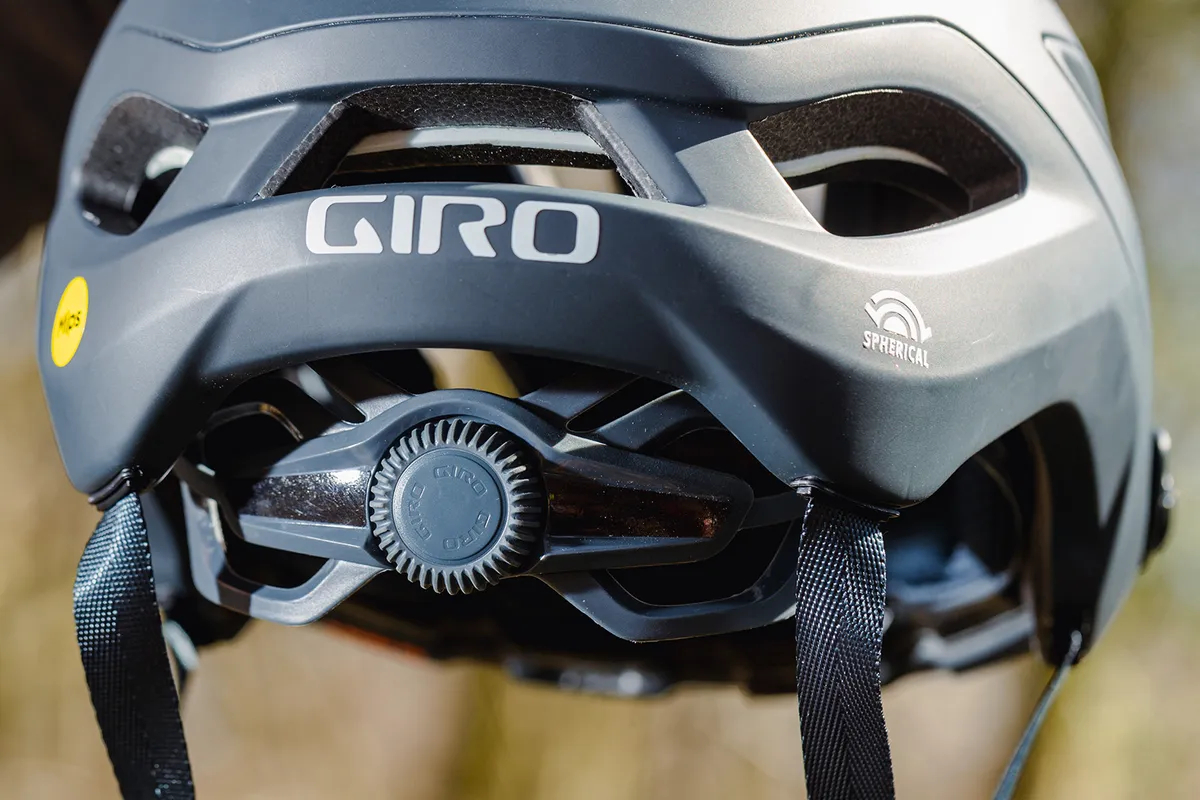
Helmet fit is subjective, but if like me you have an oval-shaped head, Giro helmets tend to be pretty comfortable. The Merit is no different.
Getting the Merit’s fit right is a quick and easy affair, with the Roc Loc retention cradle providing a nice even tension around the head with no nasty hotspots, even after a long day in the saddle.
Thanks to the accurate fit, I never felt the need to crank the adjuster dial up too tight (another factor that adds to the all-day comfort factor). Even when riding fast, rough trails, the Merit stayed put and didn’t shift around as I got bumped about on the bike.
The padding is just the right side of plush, too, with enough cushioning to make for an extremely comfortable fit and still soak up enough sweat to keep it from dripping in your eyes when working hard.
Venting is good, though I’d argue not quite as good as that of the Manifest. It’s impressive, nonetheless, even when pace drops while climbing.
I’ve worn the Merit with 100% Glendale and Smith Bobcat glasses, both of which worked well with the helmet and didn’t interfere with the cradle or bash against the rim of the lid while riding.
How does the Giro Merit Spherical helmet compare?
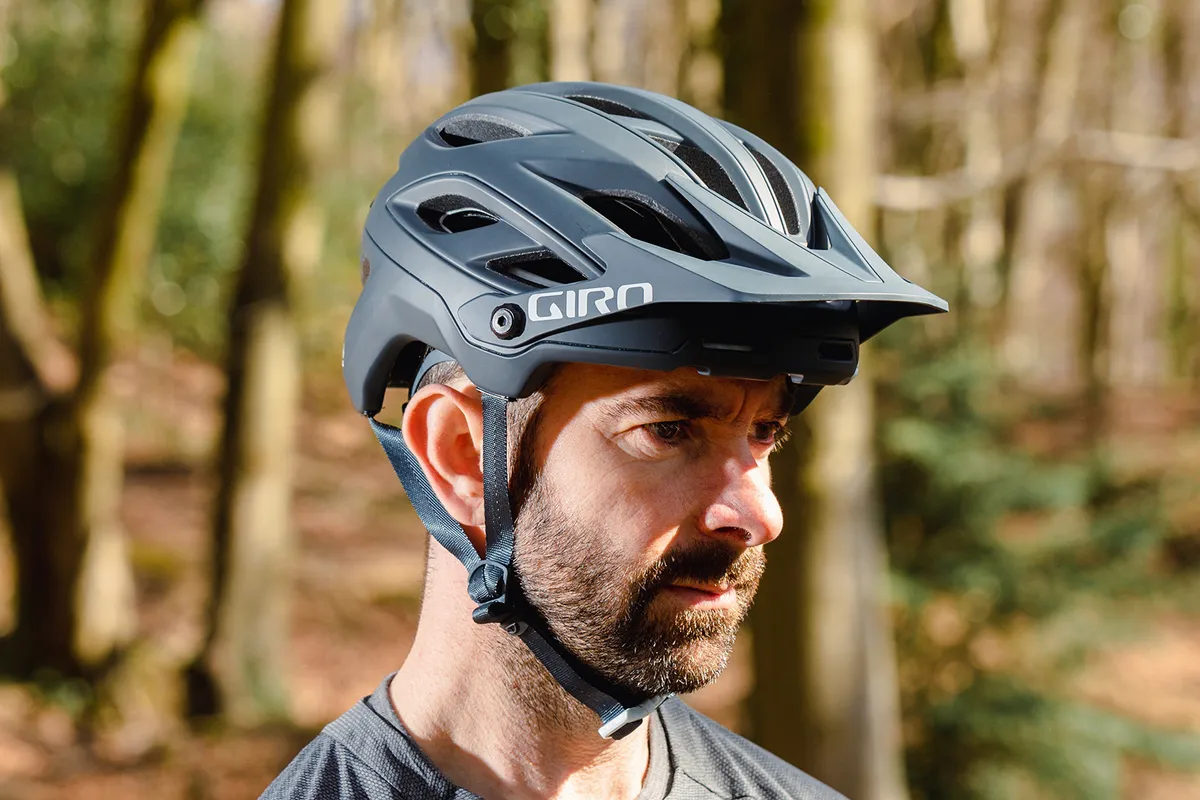
Considering the technology involved, comparing the Merit to the pricier Manifest seems wise.
While the Merit might not be quite as airy as the Manifest, it’s still pretty breezy when you get moving.
Both helmets are really close in weight (I weighed the Merit at 364g and the Manifest at 363g), too, and feature very similar safety technology.
Do I miss the magnetic buckle featured on the Manifest? Not really. I’m more than happy with the standard buckle and a marginally warmer head, knowing that I’ll save £60 by choosing the Merit.
Compared to the Troy Lee Designs A3, which weighs 411g, the biggest difference I noticed immediately during back-to-back test rides was just how deep the A3 sat on my head. That extra drop around the back of your head really is noticeable.
That said, the Merit still offers a deep enough fit to provide ample peace of mind. It doesn’t feel perched on your head, as some helmets can, and is reassuringly robust when it comes to how securely it hugs your head.
Giro Merit Spherical helmet bottom line
I’m a big fan of the new Merit helmet. Okay, it might not be quite as airy as the pricier Manifest, and doesn’t feature all the same bells and whistles either, but that’s fine by me because it’s still a top performer that’s supremely comfortable. It's also light and airy enough to leave on all day.
The price is still high, but there’s a lot of safety tech here, which feels like a plus to have – if you can afford it.
Product
| Brand | Giro |
| Price | A$330.00, €210.00, £190.00, $220.00 |
| Weight | 364g |
Features
| MIPS | yes |
| Helmet type | mountain_bike_open_face |
| Features | Sizes: S (51-55cm), M (55-59cm), L (59-63cm) Visor: Adjustable Moto-style screw-in Vents: 15 Colours: Matte Black; Matte Harbor Blue; Matte Metallic Black/Ano Lime; Matte Portaro Grey; Matte White/Black |
